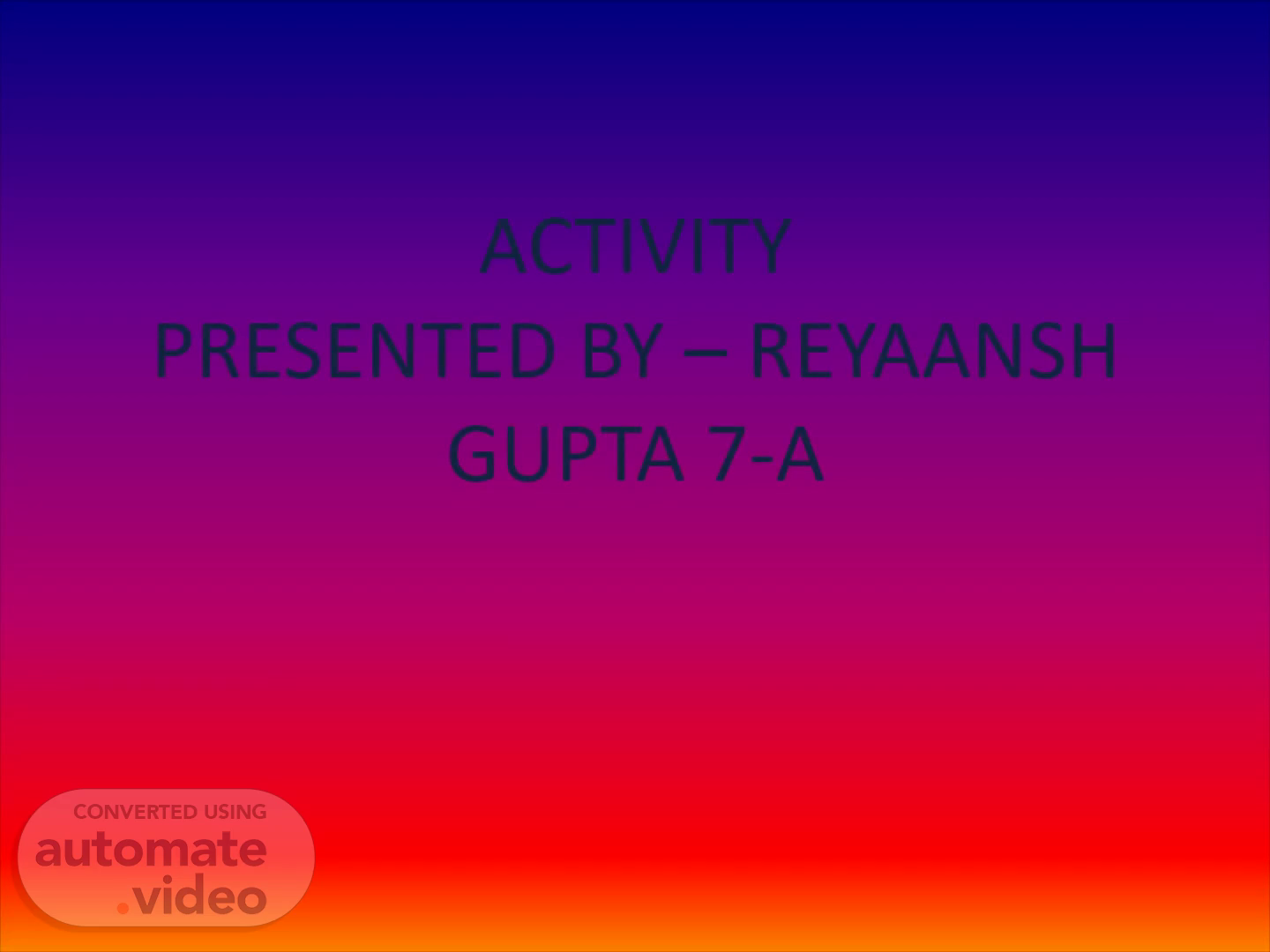
ACTIVITY PRESENTED BY – REYAANSH GUPTA 7-A
Scene 1 (0s)
ACTIVITY PRESENTED BY – REYAANSH GUPTA 7-A.
Scene 2 (6s)
Nutrition in humans.
Scene 3 (12s)
Mouth & Buccal cavity.
Scene 4 (18s)
1.The Teeth. The primary function of teeth is mastication , which involves the cutting, mixing, and grinding food to allow the tongue and oropharynx to shape it into a bolus that can be swallowed. Teeth are made up of different layers — enamel, dentin, pulp, and cementum . Enamel, which is the hardest substance in the body, is on the outside of the tooth. The second layer is dentin, which is softer than enamel, and the deepest layer inside the tooth is pulp, which consists of nerves and blood vessels. Your teeth are divided into four types: incisors, canines, premolars and molars . At most, you have 32 permanent teeth, but you start with 20 baby teeth, which include only incisors, canines and molars.
Scene 5 (55s)
Incisors are used for cutting of food. Canines are used for tearing of food.
Scene 6 (1m 7s)
The tongue is a muscular organ in the mouth. 2.Tounge.
Scene 7 (1m 30s)
3.Food Pipe (oesophagus). Windpipe (trochea} Oesophagus (food g•pel Lungs Can:e•.
Scene 8 (1m 56s)
4.The stomach. Esophagus Liver (faded) Adrenal glands Kidneys Gallbladder Transverse colon Diaphragm Stomach Spleen Pancreas.
Scene 9 (2m 29s)
5.The Small Intestine. Parts of the Small Intestine Stomac Small intestine Duodenum Jejunum Ileu Appendix Rectum Colon @ 2013 Terese Winslow LLC GcwL has certain rights.
Scene 10 (2m 56s)
6.Large Intestine. C:\Users\HP\Desktop\REYAANSH\reyaansh p\download (2).jfif.
Scene 11 (3m 37s)
(v-z)vun• nsuvvnu xa N0nssnwans.